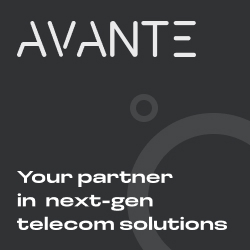Society is becoming less dependent on physical cash. Convenience and recent measures to reduce the transfer of germs and viruses have hastened the use of contactless payment. In fact, MasterCard predicts that by 2021, 90 per cent of all transactions will be cashless, with 82 per cent of consumers currently preferring “cleaner” contactless transactions over handling bills and coins.
But, the transition away from physical dollars and cents affects sectors that rely on spare change. As Chris Greenfield, CEO and founder of tiptap notes, “with no one carrying cash, a lot of charities and fundraisers aren't able to collect money anymore; tiptap allows people to easily collect contactless payments, donations and tips.”
The Ontario-based startup uses IoT technology to securely and instantaneously bridge the gap between organizations in need and donors no longer carrying cash. “We're trying to reduce the barriers to giving,” says Chris.
Technology that removes barriers
What makes tiptap’s solution unique is it can function as an autonomous Point of Sale (POS) system thanks to near field communication (NFC) technology. Each tiptap device has a wireless receiver, allowing instant confirmation and acceptance of credit cards, debit cards or mobile wallets. And transactions can be contactless. “You just place your card or phone in range of the scanner” explains Chris. “The transaction information is then sent through a secure cellular network with Rogers.”
Known as Long Term Evolution for Machines, or LTE-M, this technology is a low-bandwidth network specifically designed for IoT solutions. “It's a dedicated pipe for us, which means it takes less than a second to securely send the information to our server and get a response back.”
But unlike most common POS terminals, the tiptap unit can be embedded in turnstiles, bus shelters, park entries, or anywhere else that it might be needed. This gives the option of securely operating the service when unattended.
Adding value along with technology
To ensure fast, affordable and secure transactions, tiptap needed a network connectivity provider to help them get their idea off the ground and connected. After reviewing several providers and solution options, they chose Rogers. And their decision was not only based on technology.
“The experience we’ve had with Rogers from the very beginning has been more like a partnership than a supplier and customer relationship,” recounts Chris. Although tiptap was a small startup, Chris was reassured that Rogers shared his vision. “From our very early discussions, Rogers saw potential and viability, not just from a business perspective but also for the community and for those in need,” explains Chris. “As a result, we felt that they had a vested interest in what we do.”
Setting a team up for success usually begins at the onboarding stage, but Rogers had been working with tiptap long before they decided on a network. “The Rogers technology team was able to help us with the decision between an electronic SIM soldered to our control board or a SIM typically found in a cell phone or mobile device. We looked at it from a cost and future utility perspective, and Rogers helped us see the benefits of each option, along with the respective shortcomings when it came to future innovations and upgrades,” recalls Chris.
The Rogers team went one step further to ensure the SIM they chose would work for the application. “They also helped us work closely with the processor and chip manufacturer to make sure the SIM and the chip would communicate properly, that it would manage the speeds that we needed” explains Chris.
With the hardware decision out of the way, the next step was choosing the appropriate network. “They helped us decide on a virtual private network (VPN) and see the benefits … by providing comparisons to other financial clients. These examples helped us see why we would want to go private versus public network access,” Chris recounts.
“Rogers was a tremendous help for us to get our product to market, and, in fact, got us to market quicker. And now that we’re in market, we still receive that same level of support and service.”
Scaling to meet the demand for contactless solutions
Success is easy to see in the numbers: by the end of 2020, there will be 50,000 tiptap devices in use in Canada alone. In 2021, Chris projects that number to be 150,000. The company is also beginning pilots in the United States this year. Part of the reason for this swift adoption is the significant ROI that users are seeing.
“Some of our customers are seeing 10 times the ROI with tiptap, and four times more donations than they saw with typical cash collections,” says Chris. Among their customers, donations are skewing higher with tiptap than with cash, as people typically put a handful of change into a collection kettle versus inserting bills. “When we put options for $5.00, $10.00 and $20.00, we thought the majority of users would choose $5.00, but that wasn’t the case,” explains Chris. “These results look promising for organizations dependant on donations.”
Having tiptap as an option has become critical for some organizations, particularly in the wake of the COVID-19 pandemic, which accelerated the demand for contactless payment options. Recent data shows that 62 per cent of Canadians are using less cash since the beginning of the pandemic, and 42 per cent are avoiding shopping at places that don’t accept contactless payments.
While charities, events and transportation services currently use tiptap, Chris sees the company growing as the demand for contactless payment booms.
“Our aspiration for the future is for every piano teacher, busker, street performer and bartender to have the device to facilitate quick, easy digital payment,” says Chris.









